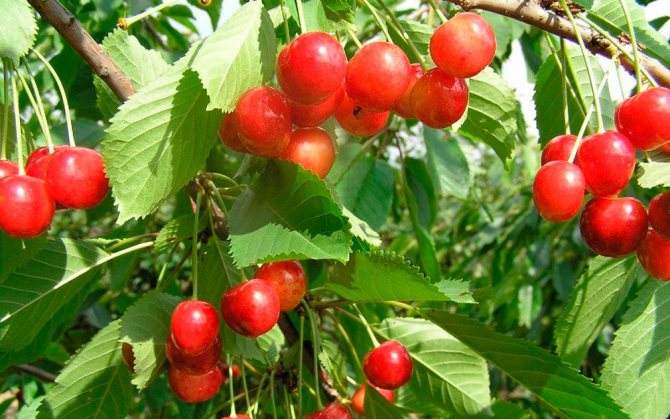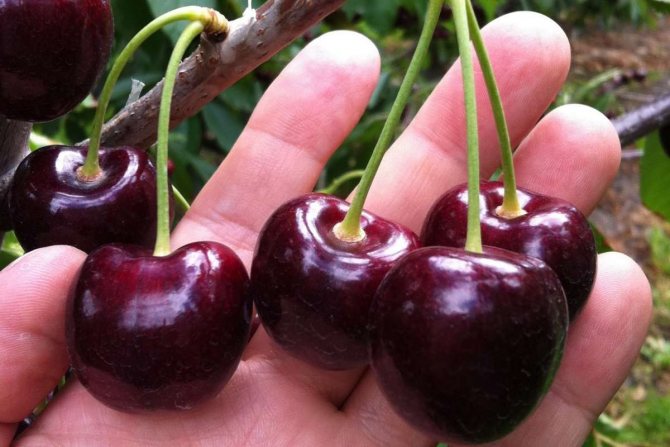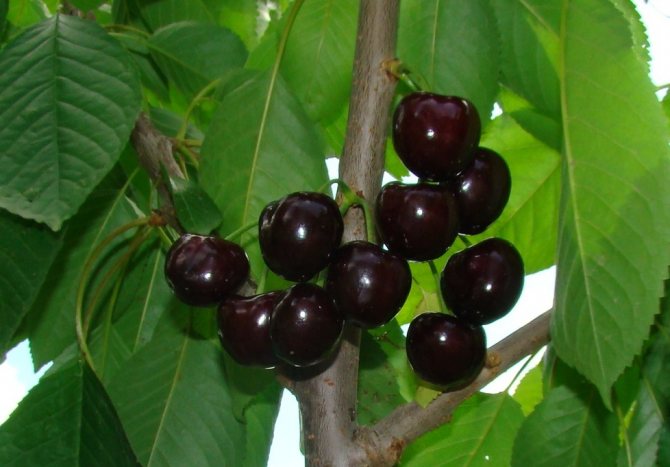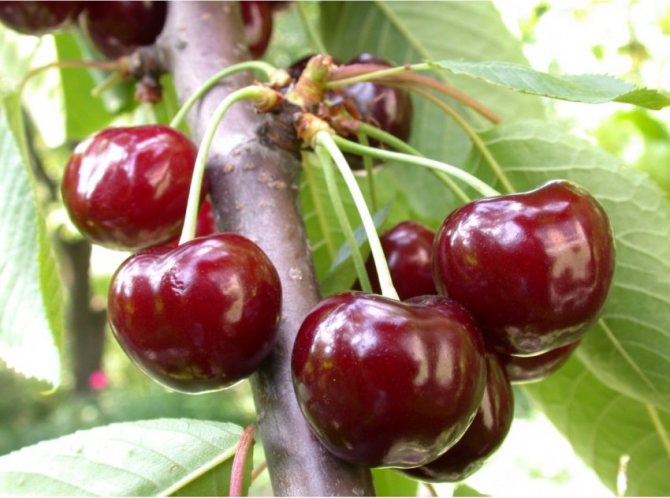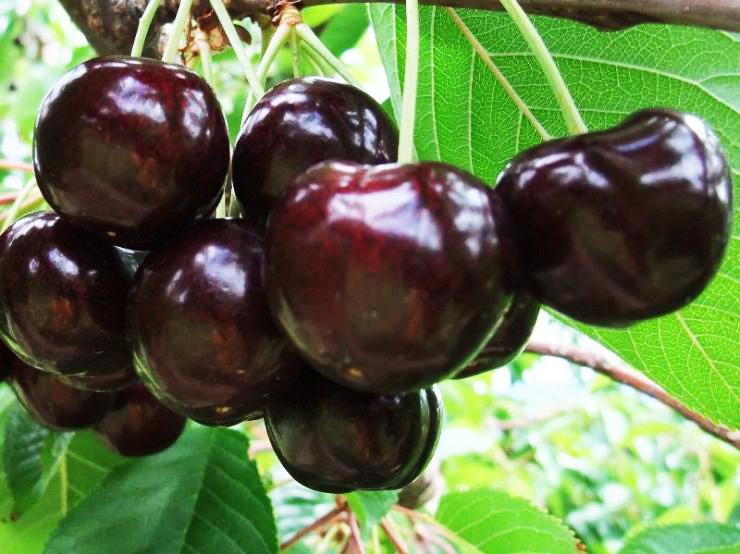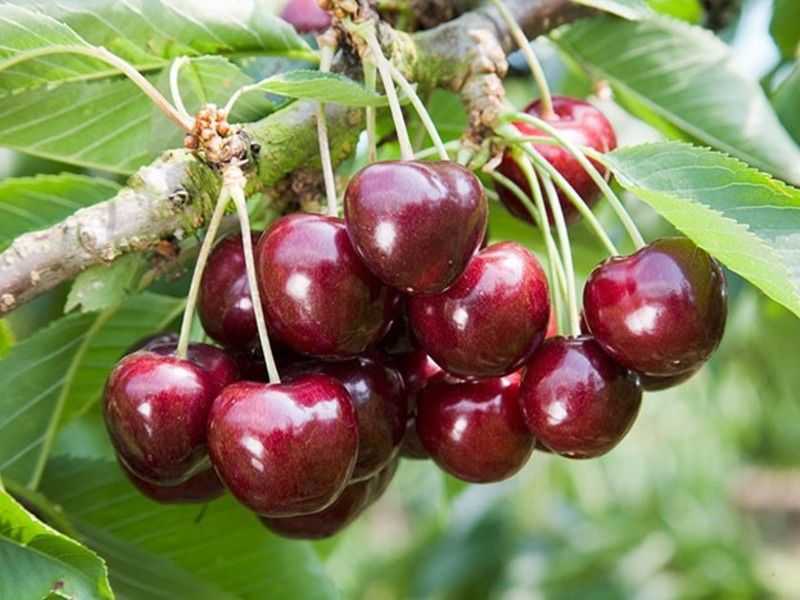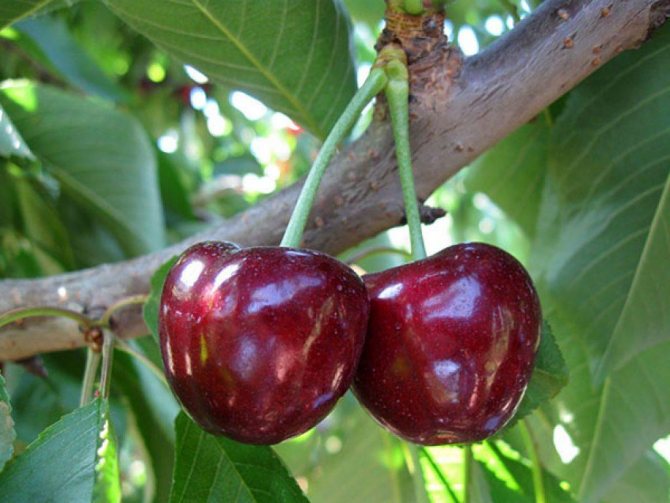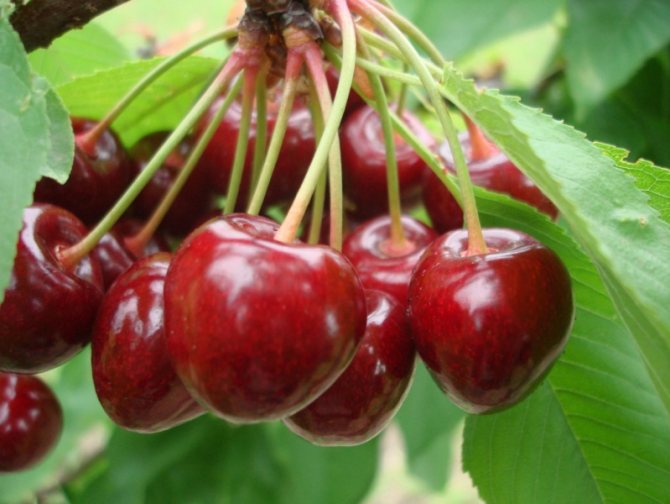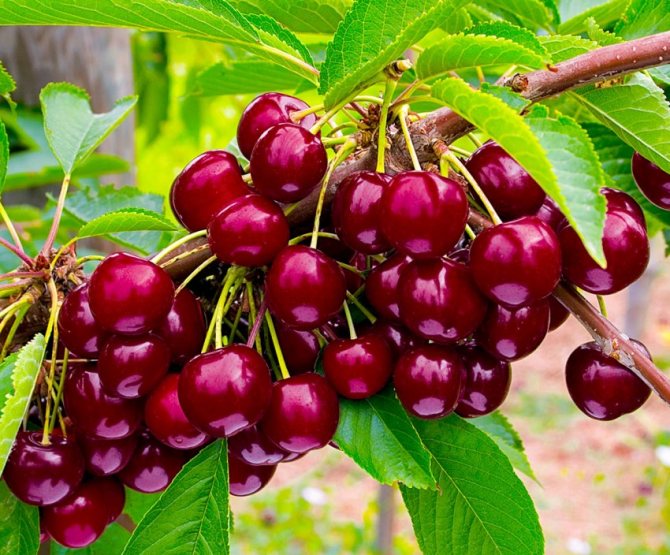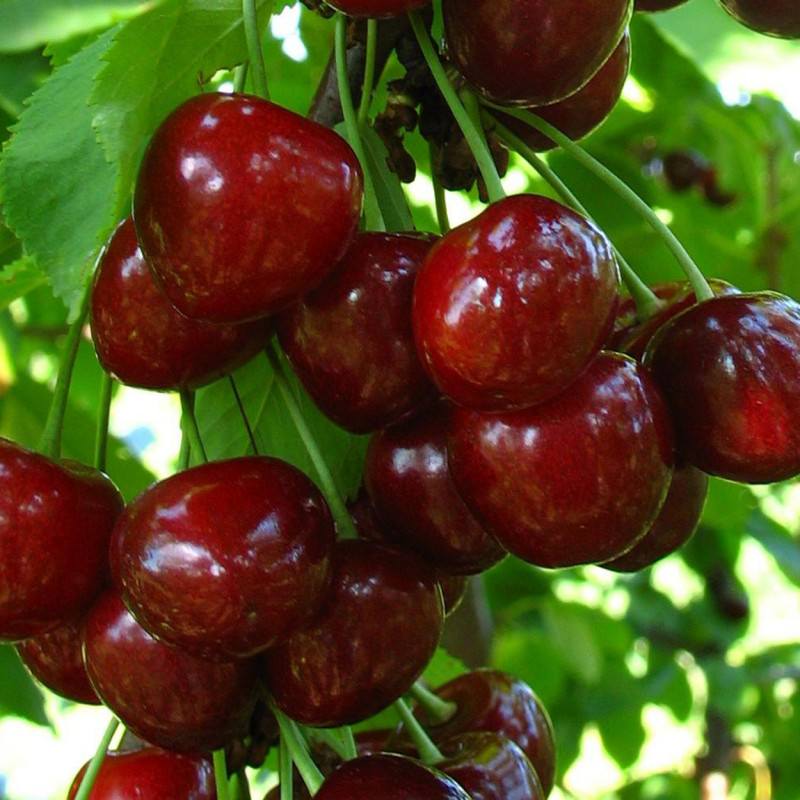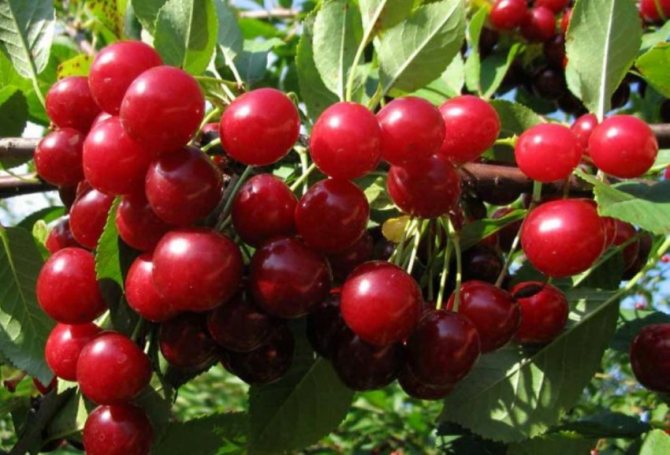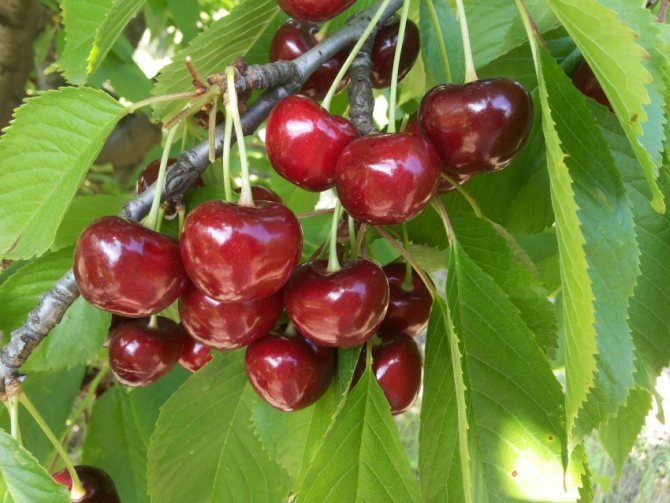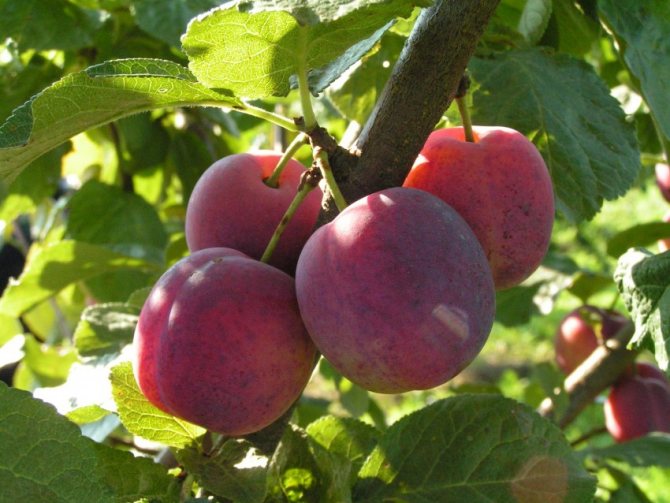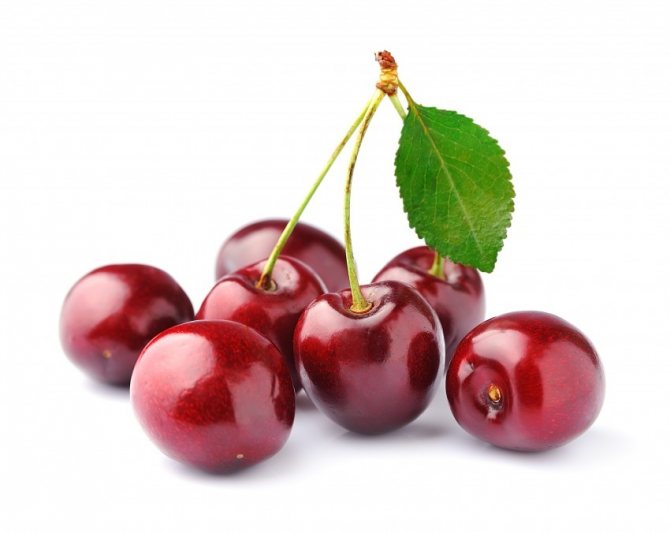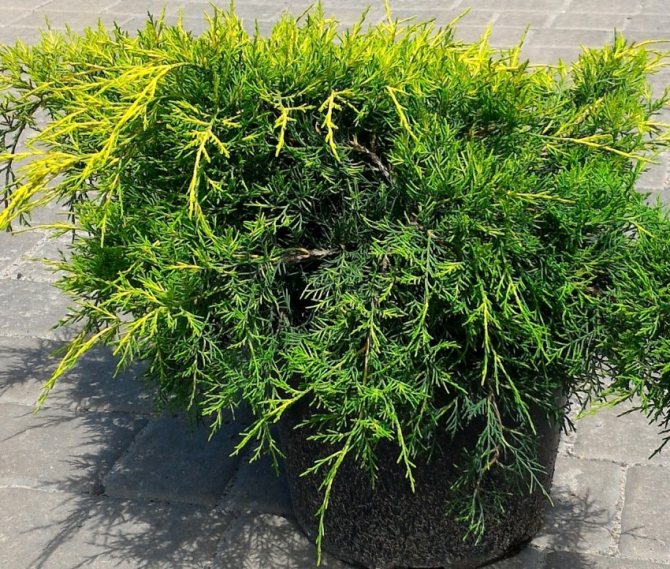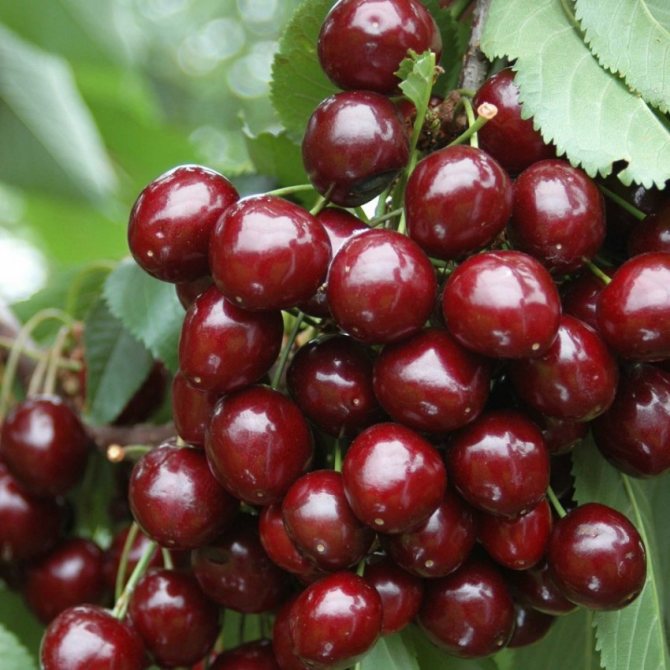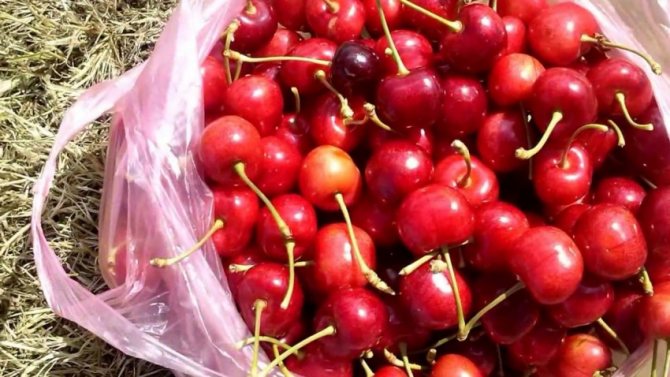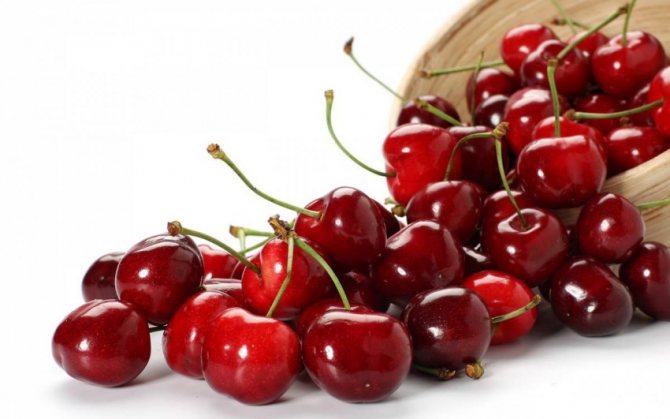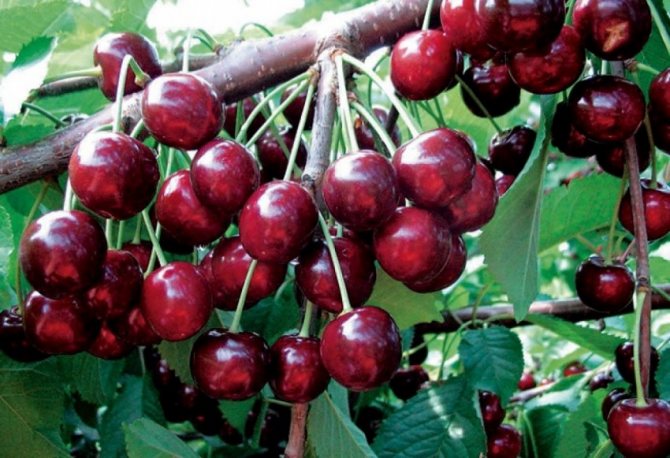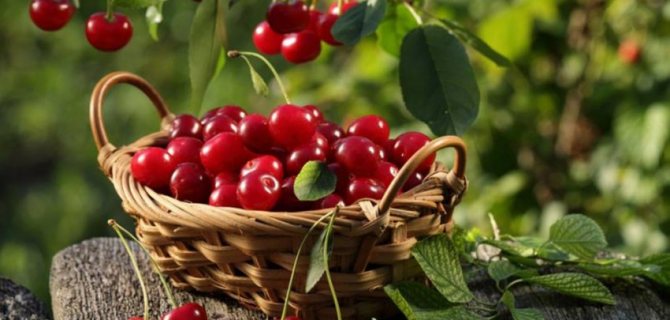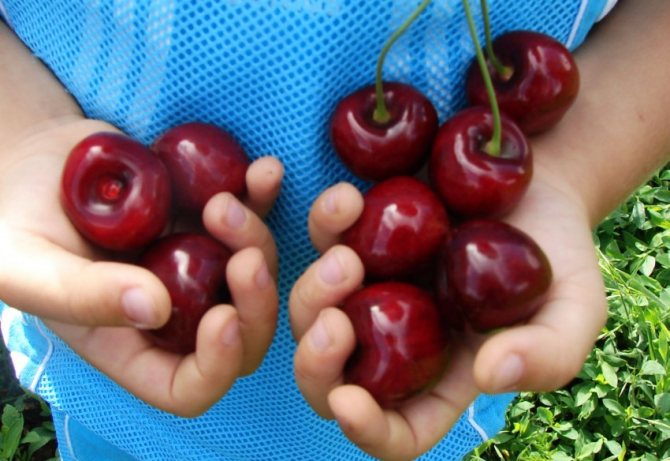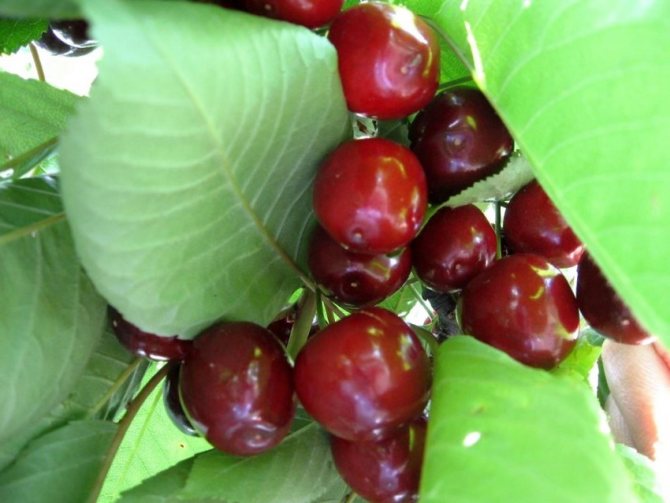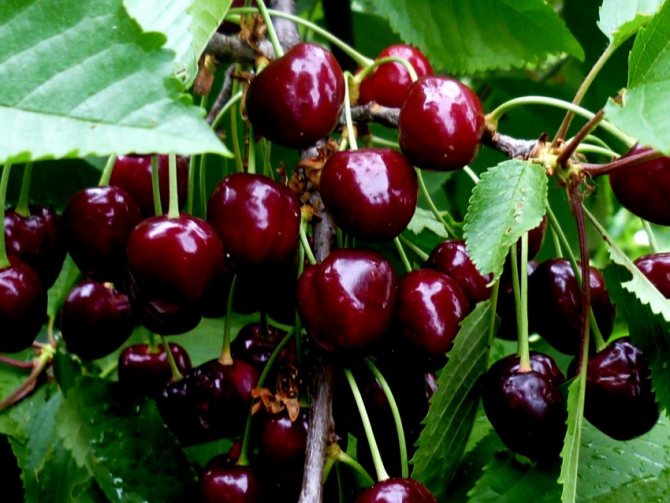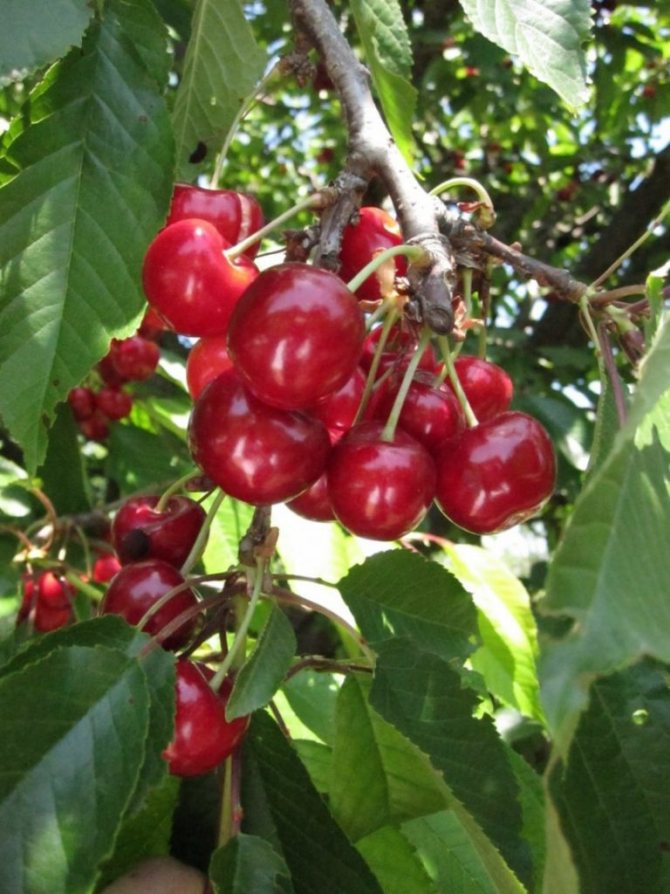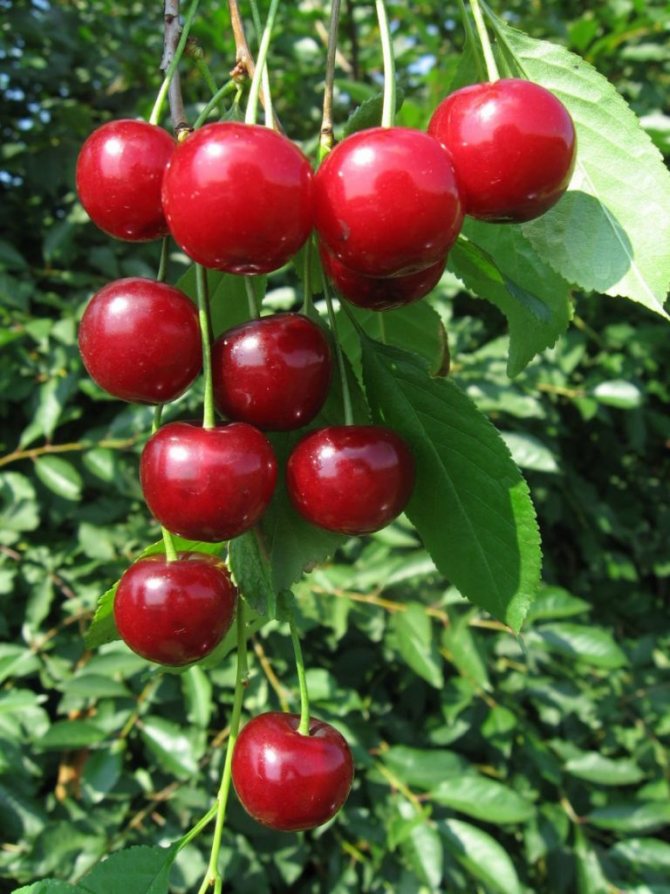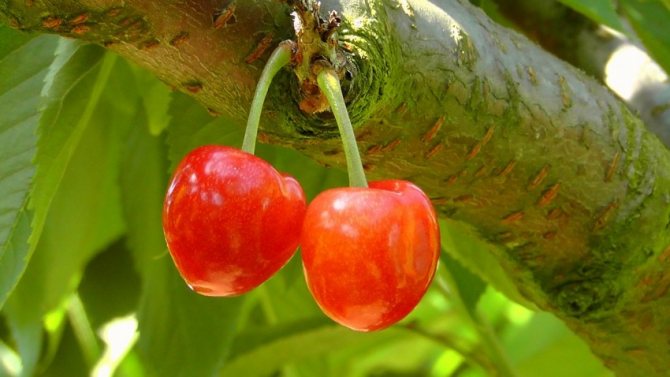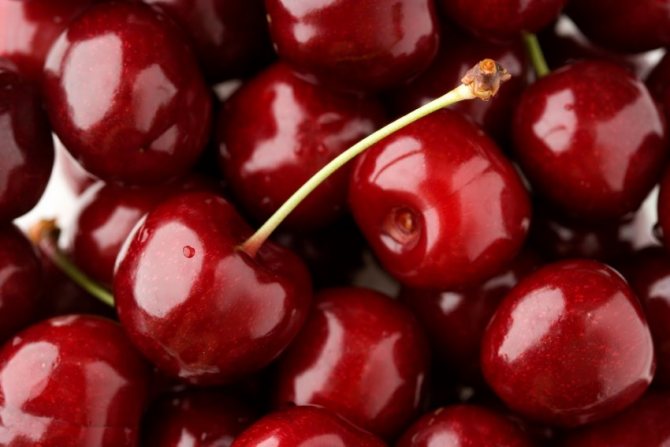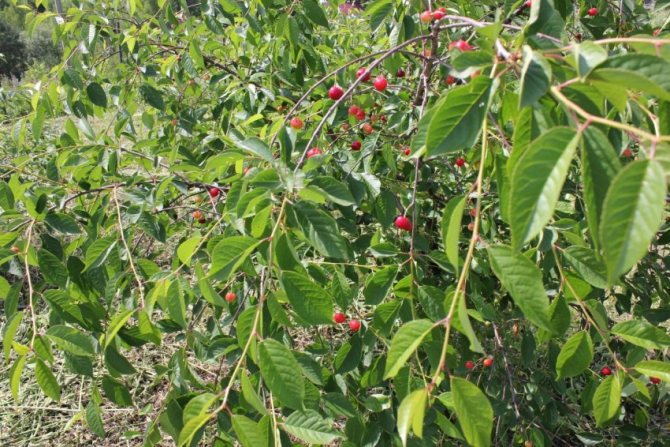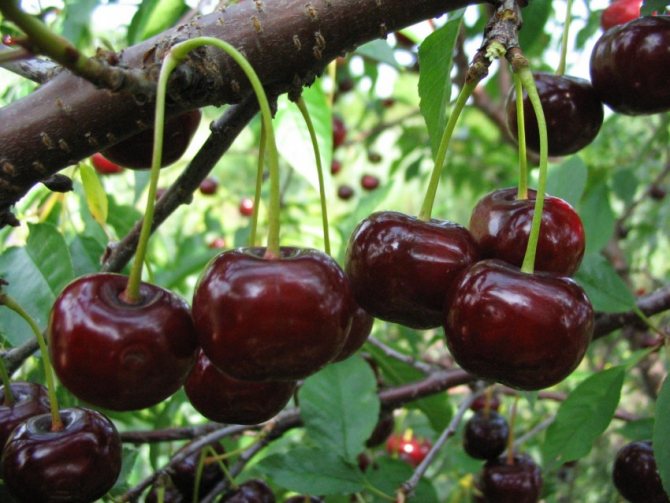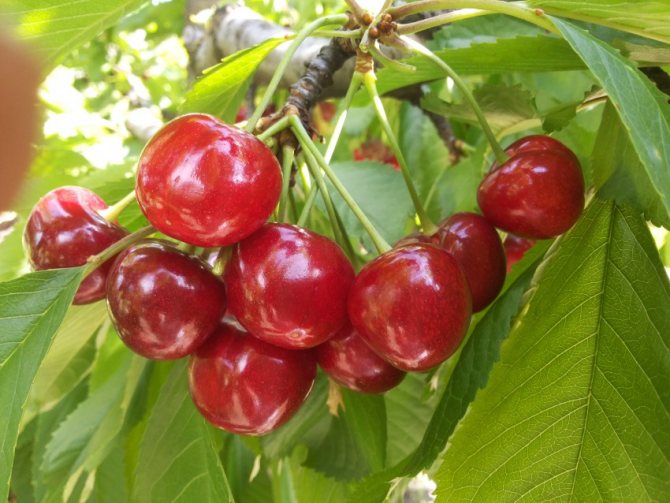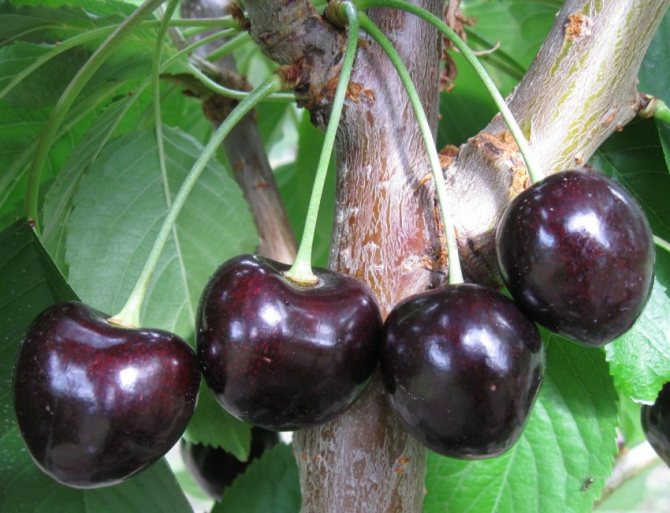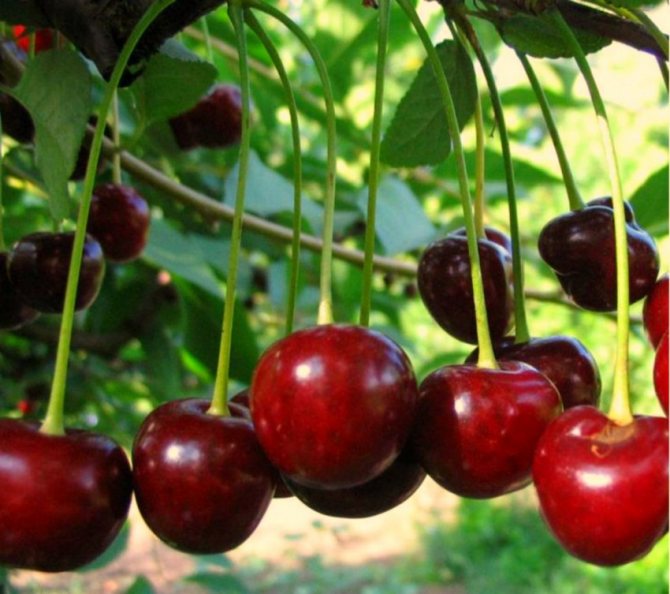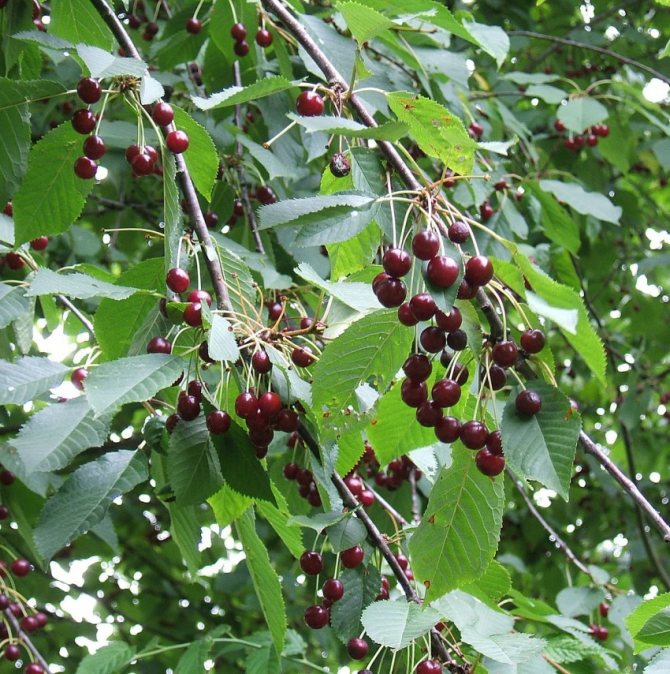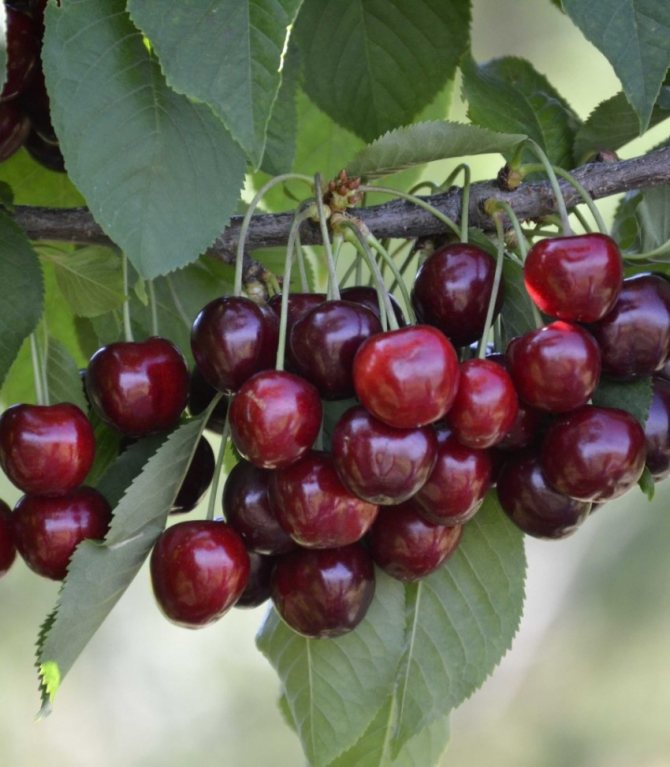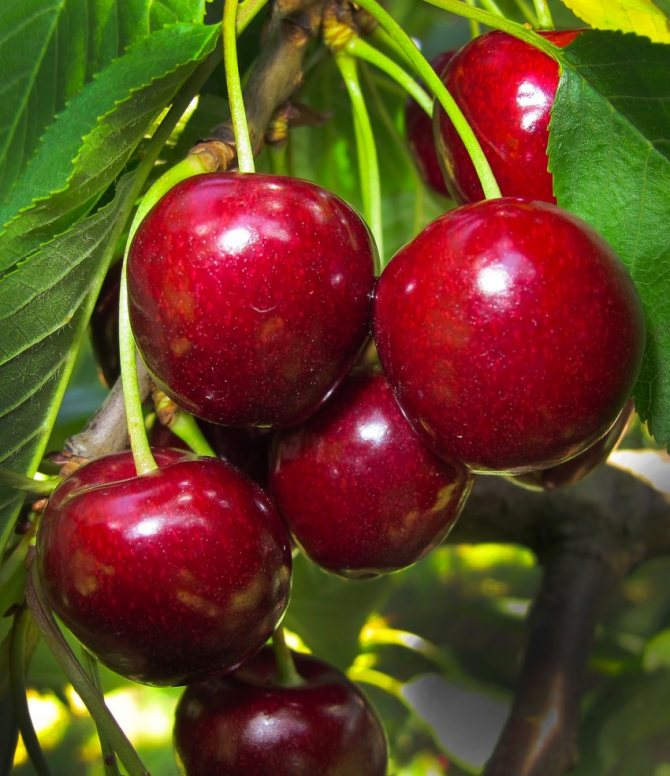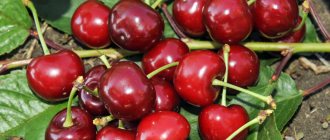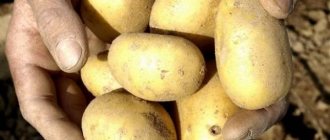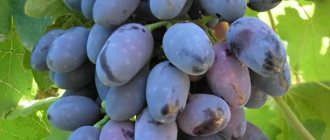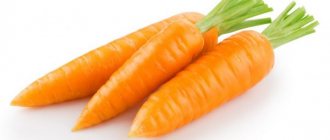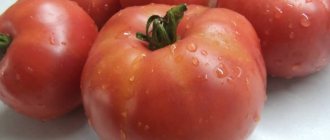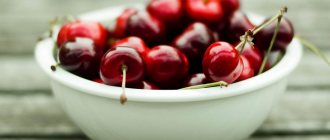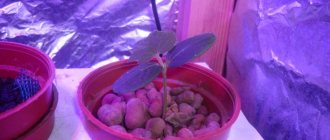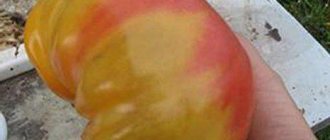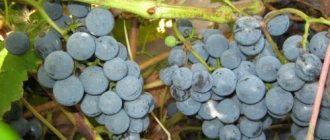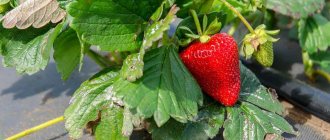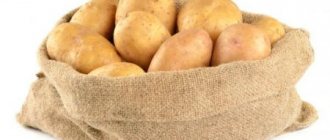Large-fruited cherry is one of the unique varieties that is rightfully very popular among gardeners. Among other species, it stands out for its excellent characteristics - resistance to various diseases, frost, and also delicious and very large berries.
That is why, when choosing a variety for planting on their own plot, many are considering this option in the first place. We will consider in more detail all the features of this type of sweet cherry in this article.
Breeding history of the variety
The large-fruited sweet cherry was bred in the 70s of the last century at the Ukrainian Research Institute of Irrigated Horticulture. The authors of the variety were Ukrainian scientists M.T.Oratovsky and N.I. Turovtsev.
The culture was obtained as a result of pollination of the Napoleon variety with a combination of sweet cherry pollen Valery Chkalov and Elton Zhabule.
Did you know? A green food coloring is produced from cherry berries.
Already in 1983, Large-fruited sweet cherry was included in the Ukrainian register of varietal plants. The culture quickly spread throughout Ukraine and other post-Soviet countries. In Russia, it is cultivated in the southern and central regions.
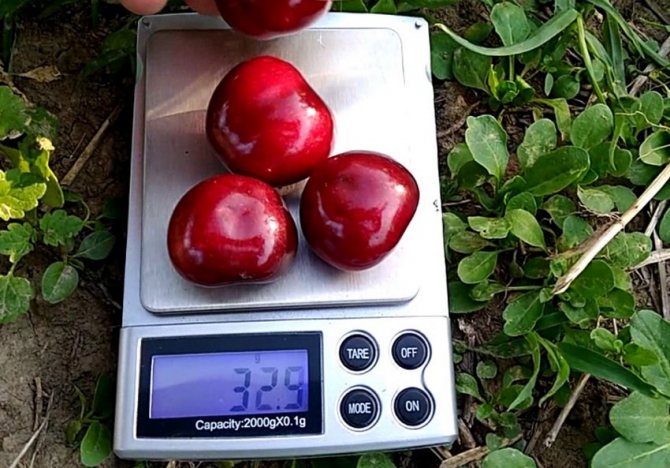
Description of culture
The height of a tree of this variety can reach 4-5 m. The culture is characterized by high vigor.
The shape of the crown is spherical. Leafiness and thickening of shoots are average. Skeletal branches are strong and thick. The bark is brown, smooth. The leaves are large, pointed at the ends, serrate at the edges. Painted in deep green.
The flowers are large, five-petal, umbrella-shaped. Fruits are formed mainly on bouquet shoots and one-year-old growths.
The berries are large, wide-rounded, weighing from 10 to 18 g. The rind is dense, dark red, almost black. The pulp is cartilaginous, juicy, also colored in an intense red color. The bone is easily separated from the pulp. The taste of berries is sweet and sour, refreshing.
Characteristics of the variety
To optimize your work on growing and caring for cherries, studying its main characteristics will help.
Napoleon also belongs to the late varieties of sweet cherries.
Before proceeding with the preparation of the site and the search for planting material, you should familiarize yourself with the tolerance of the variety in relation to cold, drought, diseases and pests.
Drought resistance and winter hardiness
The culture has a fairly high moisture resistance. Plants tolerate too high soil moisture worse.
In rainy years and with a high intensity of watering, the quality of the crop decreases - the fruits become watery, do not accumulate a sufficient amount of sugar and crack.
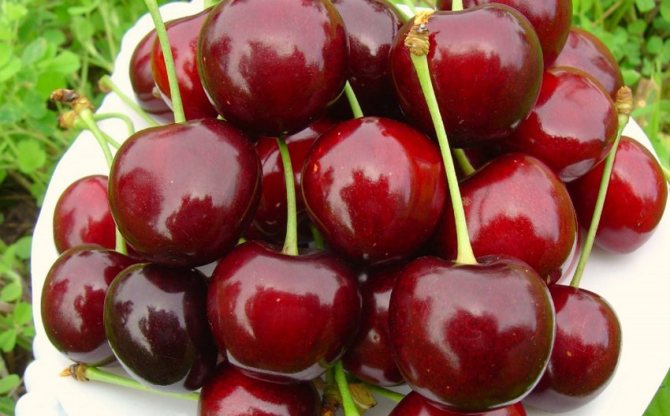

The purpose of creating the variety was not to obtain a cold-resistant plant. Despite this, Large-fruited shows an average frost resistance, and can tolerate temperatures as low as -25 ° C.
But, this only applies to adult, fruiting specimens. Young seedlings do not tolerate cold weather well. In this regard, it is necessary to plant trees only in the spring.
Pollination, flowering period and ripening times
Plants enter the fruiting phase already 4 years after planting. Flowering starts late and depends on climatic conditions. So in the south, trees can bloom as early as April, and in temperate climates only at the end of May. The main condition for entering the flowering phase is an average daily temperature of + 15 ° С. The culture is self-fertile. To obtain a harvest, you need to plant several pollinator trees with similar flowering periods next to the Large-fruited cherry.
- The best pollinators for the variety in question are:
- Large-fruited yellow and pink;
- Francis;
- Surprise.
Important! In the absence of pollinator plants, no more than 10% of berries are tied on a large-fruited cherry.
The fruits ripen in late June - early July, depending on when flowering began.
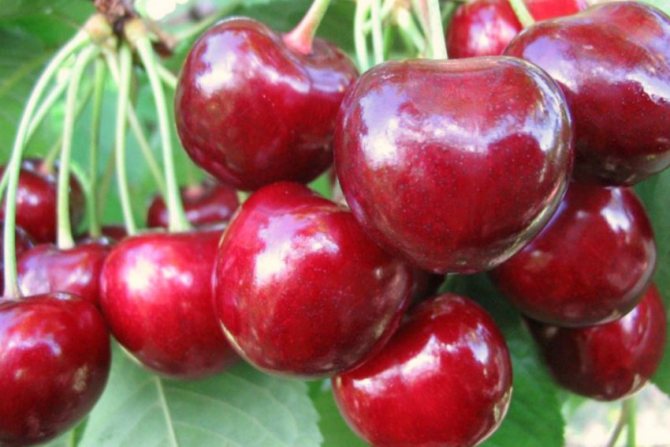

Productivity and fruiting
The crop is characterized by consistently high, regular fruiting without downtime. One tree can be harvested annually from 44 to 56 kg.
Disease and pest resistance
The plant is highly resistant to diseases and parasites. However, to maintain this quality, it is necessary to follow all the rules of agricultural technology and carry out prevention. The culture has a genetic resistance to moniliosis.
Advantages and disadvantages of the variety
- Based on the characteristics of the plant, the following advantages can be distinguished:
- high regular yield;
- good commercial quality of fruits;
- high resistance to diseases and pests;
- genetic resistance to moniliosis;
- resistance to drought and frost.
The only drawback of the plant is self-fertility.
Preparing for winter
Young seedlings that have not yet borne fruit must be prepared in advance for the approaching winter frost, for this they are tied completely using burlap, and the near-stem area is abundantly watered and mulched.
Skeletal branches and the base of the trunk are whitewashed with a solution of slaked lime, which can be replaced with specialized garden products that provide reliable protection of the tree from damage to the bark by parasites and insects, wrapping with roofing material protects against rodents.


Landing features
The fundamental factors affecting the survival and development of trees are the selection of a suitable area and preparation for planting. In addition, special attention should be paid to the selection of planting material.
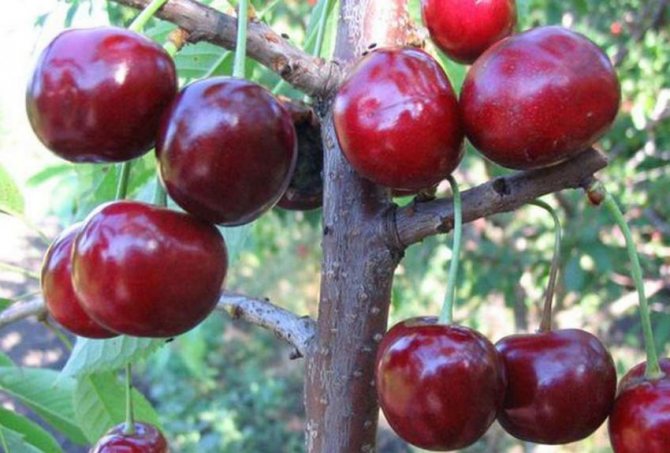

Recommended timing and selection of a suitable location
The sweet cherry of the variety in question is quite large, so it needs a spacious area. One tree must have an area of at least 4 m.
It is important that the area is well lit and not blown through by a draft, therefore, preference should be given to the southern, southeastern or southwestern areas.
Due to the poor tolerance of the plant to waterlogging of the roots, it is necessary to select in advance a place where the occurrence of groundwater will not be higher than 2 m.
Best of all, large-fruited sweet cherry develops and bears fruit on loose, well-fertilized soils. Loam and sandstone are ideal in this regard. But, far from all areas, the soil has the necessary qualities. The situation can be corrected by introducing additional elements into the soil, which will increase its aeration qualities and enrich it with nutrients.
Another important indicator is acidity. It should be neutral - within pH 5-6.
Did you know? Fresh cherry fruits have an analgesic effect on the human body.
As already described above, large-fruited seedlings have low resistance to temperature extremes. In this regard, planting is best done in the spring, even in the southern regions.
The manipulation is carried out until the kidneys swell, from mid-April to the end of May, depending on the weather. This approach makes it possible for the farmer to fully trace the process of plant survival and vegetation after planting.
In addition, during a warm period of time, the seedlings will have time to adapt to the climatic conditions of a particular zone and acquire a certain immunity to the onset of cold weather.
Six months before planting, the site must be prepared. It is cleaned, cultivated to a depth of 30 cm. Then it is disinfected with a solution of copper sulfate of 3% concentration.
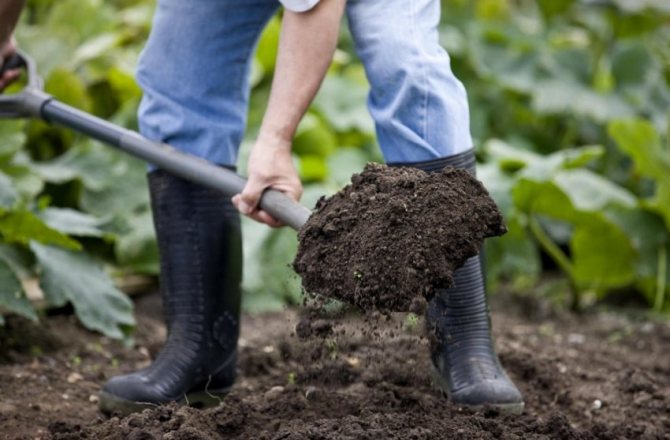

A week later, 20 kg of manure and 400 g of superphosphate are applied for each m². With increased acidity, instead, 20 kg of compost and 400 g of dolomite flour or 600 g of wood ash are added.
On heavy soils, add another 10 kg of sand and peat to the first option. Immediately after fertilization, digging is carried out again to a depth of 30 cm.
Selection and preparation of planting material
It is better to buy seedlings of the cherry in question and pollinating plants in nurseries that offer planting material adapted to a specific climatic zone. Best of all, specimens of one year old and two years old take root.
Basic rules for choosing cherry seedlings:
- Pay attention to the condition of the trunk - its height should be at least 1 m and not more than 2. The trunk is leveled, smooth, without cracks, outgrowths and signs of damage by pests or diseases. One-year-old specimens should not have side branches at all, and two-year-old specimens should have from 3 to 5 skeletal shoots at least 35 cm long.
- Examine the rhizome of the plant - it should consist of 3-4 large roots, covered with many additional ones. Check the elasticity of the root processes - a well-moistened, not dried-out root fits freely in a ring around the finger. If it is impossible to perform such a manipulation, it is better to refuse the purchase.
- Be sure to inspect the grafting surface - it is located at a distance of 5 from the rhizome, looks like a slight bend on the trunk. At this point, there should be a healed trace from the rootstock cut. If the site is fresh, then the plant is infected with a fungus, so you should immediately refuse to buy such material.
Did you know? One tree produces 113 kg of oxygen per year.
Just before planting, the seedlings need to be properly prepared. The main manipulations are carried out with the roots. In any case, when dug up before selling, transporting and storing, they get injured and dry out.
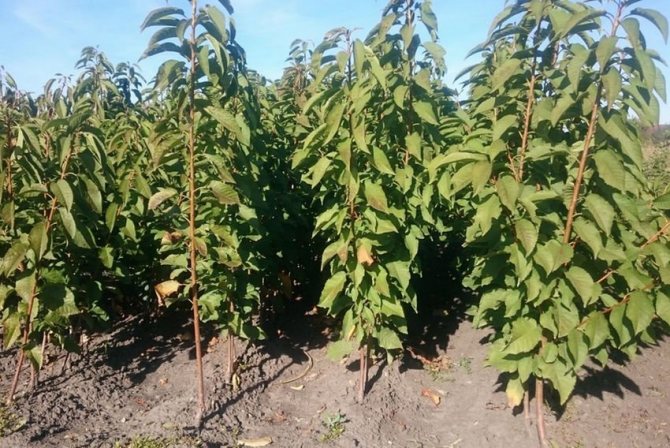

All of these pieces need to be cut back to healthy tissue. It is white when cut. After that, disinfection and stimulation of growth processes are carried out. To do this, the rhizome is immersed in a solution of "Fitosporin" for 2 hours (add 10 g of powder to 5 liters of water).
Direct landing
The optimal planting scheme for the culture in question is 4 × 4 m, even 5 × 5 m is possible. The pits are prepared a week before planting. The hole is 80 cm deep, 1 m wide.
Find out more about the peculiarities of planting cherries in spring.
The top layer 40 cm high is mixed with 20 kg of compost, 100 potassium sulfate and 200 g of superphosphate. The lower 40 cm of soil is transferred to another place on the site. The resulting nutrient soil is filled with a third of the hole, then a stake is driven in, and 20 liters of water are poured.
Landing is carried out as follows:
- In the center of the pit, on the south side of the stake, a cone-shaped embankment of nutrient soil is being constructed.
- On this embankment, the root system of the seedling is installed, gently straightened.
- Further, alignment is carried out along the root collar by increasing or decreasing the embankment - the grafting site after filling the hole with soil should be 5 cm above the soil.
- Next, the pit is covered with soil.
- After filling the hole, the soil in the near-stem circle is compacted.
- At a distance of 20 cm from the trunk, a circular ditch is formed, 10 cm deep, into which 20 liters of water are poured.
- After the soil has settled, the missing layer is filled up and mulching is carried out with compost to a height of 5 cm.
- The stem is tied to the stake.
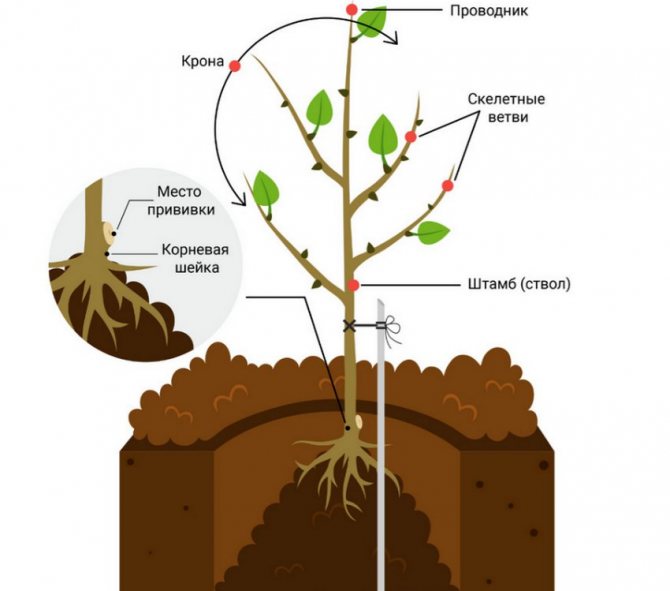

Sapling selection
For planting and good rooting, it is better to choose one-year or two-year-old seedlings, which are best purchased from specialized nurseries, high-quality planting material has a well-developed root system.
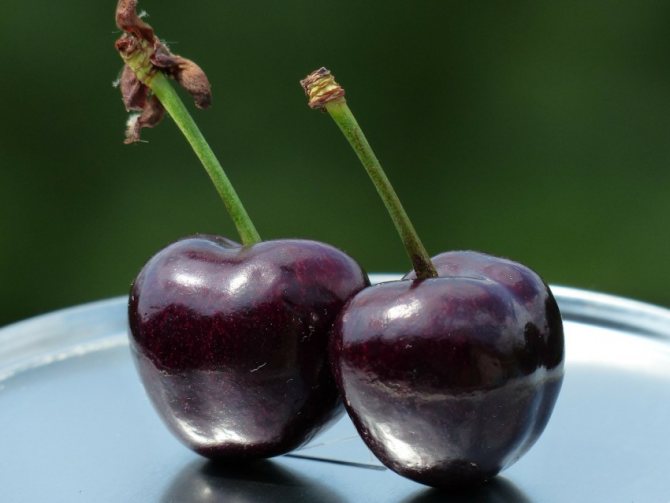

Excellent for planting young trees with no broken or damaged roots, strong and resilient branches without mechanical damage, with smooth bark, without visually identifiable wrinkles and bare branches or trunk with a clearly visible grafting site.
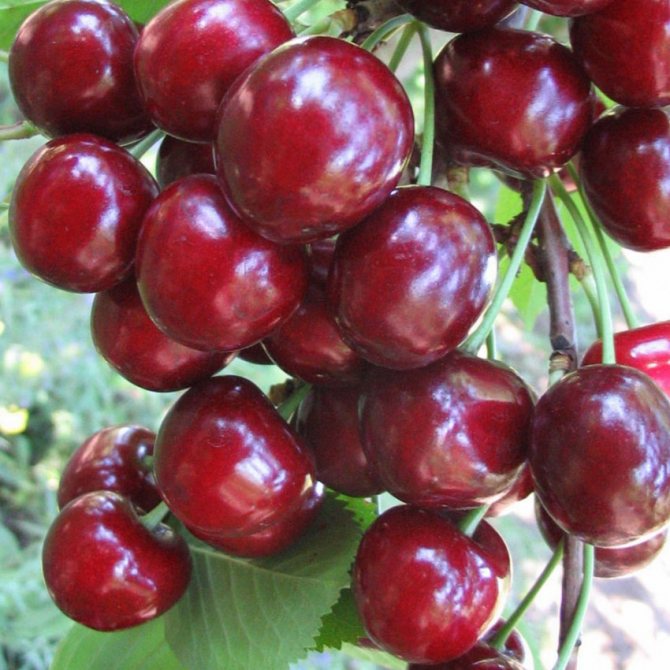

Further care of plants
A month after planting, the plants need to be watered. Young non-fruiting specimens take from 20 to 40 liters of water. Until the beginning of fruiting, they are watered once a month. If there is enough natural precipitation, then less often.
Fruiting trees are brought in moisture according to the schedule:
- at the stage of kidney swelling;
- after flowering;
- 3-4 weeks before the fruit is fully ripe.
An adult plant needs about 60 liters of water at a time.
Important! After each watering, be sure to loosen the trunk circle and row spacings, followed by mulching the soil with compost. This will protect the planting from stagnant water and the spread of fungal diseases.
They begin to fertilize trees from 3 years of age on the site. Further feeding is carried out every 2 years. At the time of the swelling of the kidneys, in parallel with the first watering, I add 6 tbsp to moisturize the water. l. urea or nitrophosphate.
After 2 years, instead of mineral fertilizer for 60 liters of water, you will need to add 10 liters of liquid mullein. Immediately after flowering, 10 kg of compost and 1 kg of wood ash are added to 60 liters of water. This top dressing is not replaced after 2 years, but is carried out as well. In the fall, about mid-October, 200 g of superphosphate and 100 g of potassium sulfate are added for digging. After 2 years, the minerals are replaced with 10 kg of compost and 10 kg of rotted manure. Organic matter is also brought in for digging.
This tree only needs maintenance and sanitary pruning. The crown is formed independently.
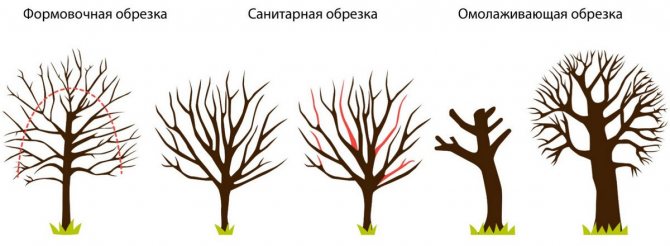

The main task of the farmer is to ensure that the shoots develop evenly and shorten the central conductor as necessary, but no more than 20 cm. Annual growths should be shortened annually by no more than 1/4. This is necessary to improve the quality of the fruit.
Fruiting
Fruiting period "Francis" can reach no earlier than the fourth year of life, more often - on the fifth or sixth. Nevertheless, in the early years, the harvest, of course, is small, but at the age of 7-8, the tree will already delight its owner fully.
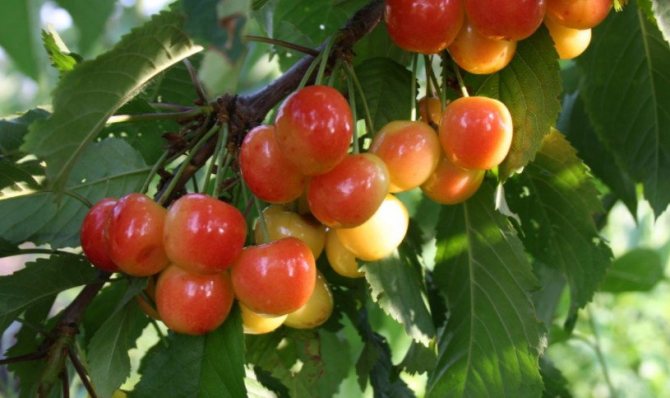

The above characteristics of the beginning of fruiting for sweet cherries are very good indicators. According to this parameter, "Franz Joseph", of course, belongs to the leaders in his group, not inferior to him unless such varieties of cherries as "Zolotaya", "Zhabule" and "Elton".
Did you know? Unlike an apple tree or, for example, an apricot, cherry, plum and many other fruit trees, the concept of “frequency of fruiting” is not applicable to sweet cherry, when this year the tree gives a bountiful harvest, and during the next “goes to rest”. Having reached a fertile age, "Franz Joseph", like its relatives, bears fruit every year, without interruption.
Diseases and pests
The cherry variety in question is not recommended to be treated with chemicals without special need. It is very rarely attacked by pests and diseases.
Learn how to properly deal with cherry diseases.
The main work of the farmer should be aimed at prevention, which consists in the following points:
- Cleaning the site in the fall from fallen leaves, fruits.
- Digging in the spring and autumn of the trunk circle to a depth of 15 cm, row spacing by 20 cm.
- Timely fertilization and adherence to the irrigation schedule.
- Treatment of wound surfaces after sanitary trimming with a 1% solution of copper sulfate, followed by sealing with garden varnish.
- With a long rainy period, dusting on the leaf and soil with wood ash.
If it so happened that pests attacked the sweet cherry, use the preparations "Inta-Vir", "Aktellik" or "Aktara" according to the instructions. If there are fungal lesions, then from chemical protection apply "Mancozeb" according to the instructions. It has a high ability to suppress most fungal strains.
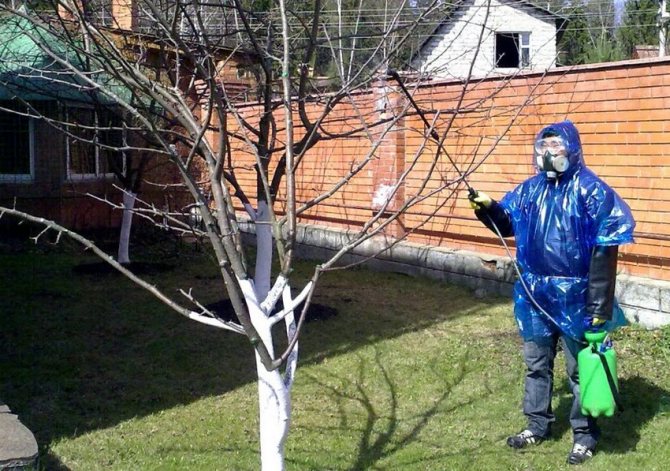

Harvesting and storage
Harvesting is carried out as the crop matures. Remove the fruits from the branches along with the tails. They are immediately laid out in wooden or plastic boxes. It is best to lay the products in no more than 2-3 layers, overlapping them with paper. This will keep the quality of the berries longer.
When stored in the refrigerator, cherries retain their quality for 20 days. The products tolerate transportation well, which makes them profitable for commerce. Also cherries of this variety are good in various culinary interpretations and winter preparations.
Did you know? Cherry wood is used for the production of wood veneer and parquet. So, if there is a dried tree of this species on the site, you should not rush to dispose of it.
The main advantage for which farmers appreciate the Large-fruited cherry variety is the quality of the berries. In addition, the culture has a high resistance to diseases, pests and is undemanding to care for.
Gardeners reviews
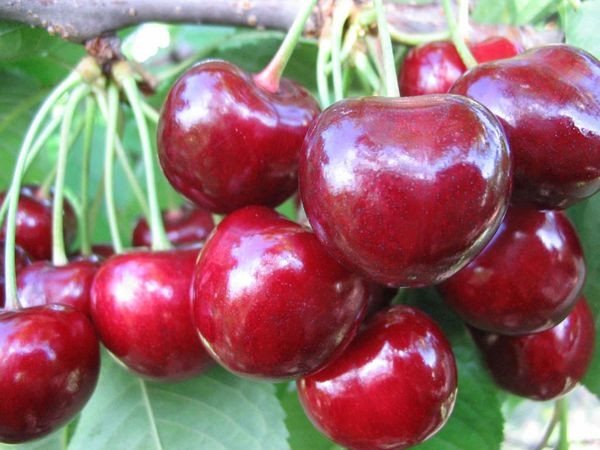

For several years, gardeners from different countries have been experimenting with this variety, carefully remembering and taking into account their observations.
Reviews from Large-fruited cherry in most cases boil down to the following:
- The trees tolerate dry weather and low temperatures well. Therefore, this species takes root well and manifests itself both in countries with a hot southern climate and a harsh northern one.
- Leaving does not require a lot of investment of effort, time, money, since it is not necessary to fertilize Large-fruited cherries, or at least you can do it not with a clear regularity.
- Another important point that many gardeners note in their reviews of Large-fruited cherry is its resistance to various diseases, including those that are characteristic of all stone fruit crops (bacterial cancer, coccomycosis).
- Those who grow large-fruited cherries for sale noted its other positive feature: due to the dense peel, the berries are well stored and withstand transportation.

